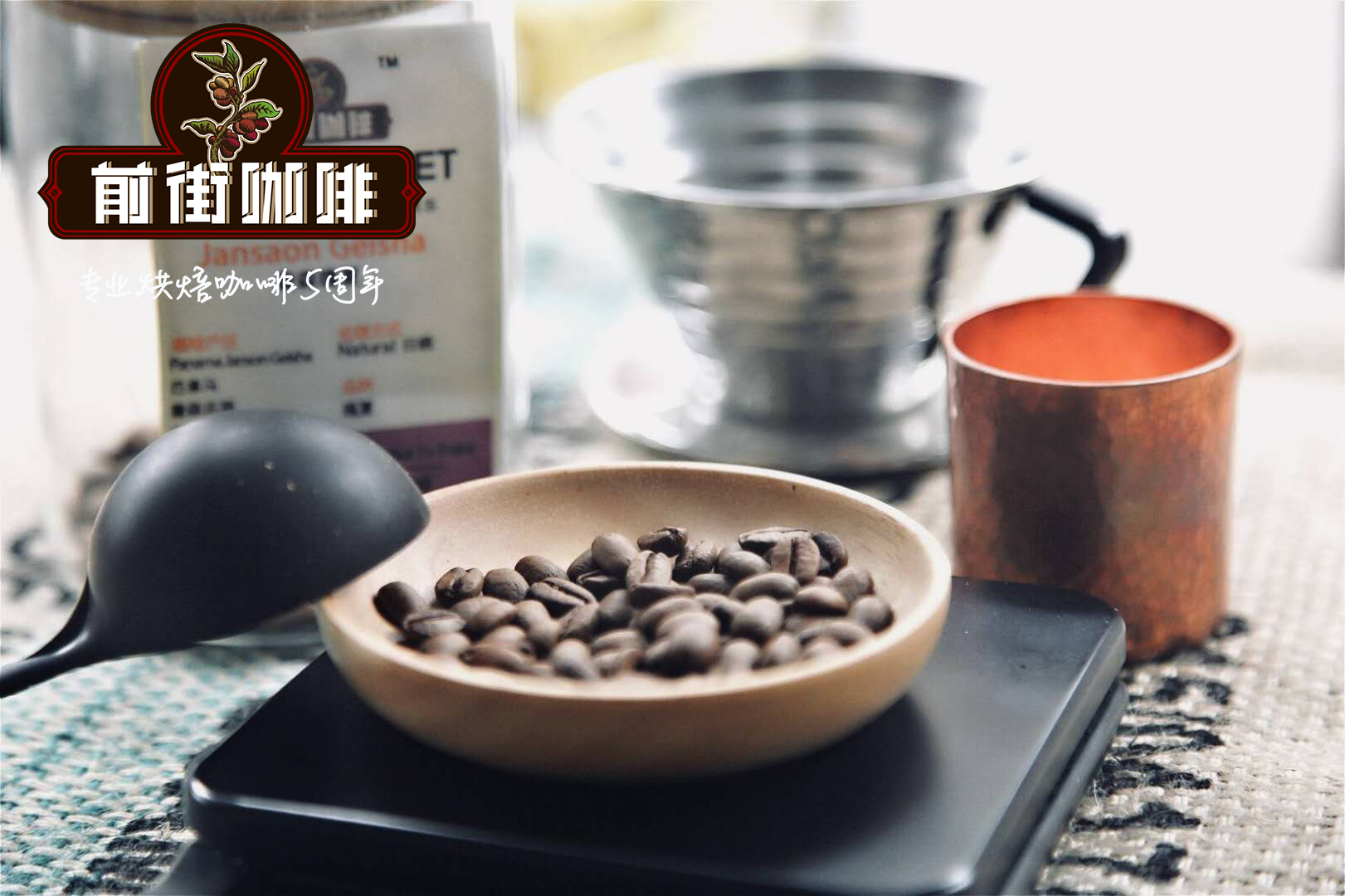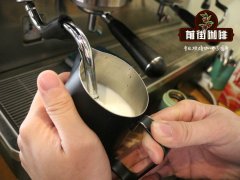You must know the price report of Arabica coffee beans

Professional coffee knowledge exchange more coffee bean information please follow the coffee workshop (Wechat official account cafe_style)
Common coffee trees are divided into two main categories, Arabica (Arabica) and Robusta (Robusta). There are also many small species under it, so we won't say that some kind of coffee is Arabica or Robbosa beans, but with subdivided coffee beans.
● Arabica
All the world's high-quality coffee comes from Arabica, accounting for about 70% of the world's coffee production. It is rich in flavor, high-quality acidity and flower fragrance, but the planting conditions are harsh, need to be planted in high-altitude areas, the growth is relatively slow, and very easy to be infected with diseases and insect pests.
● Robusta
Robustadow is planted at low elevations and has no high requirements for the natural environment for growth. its yield is twice that of Arabica trees, so it is easy to grow and has strong resistance to diseases and insect pests. As the content of chlorogenic acid and trigonelline (the source of bitterness in coffee) in Robusta is twice that of Arabica, and the content of caffeine is also high, so the taste is natural and bitter, most of them will not drink alone, and it is the main raw material of instant coffee. Some Italian coffee will also be mixed with a certain proportion of robusta for better performance of espresso fat.
You must remember the Arabica coffee bean species
(the coffee beans described below belong to the Arabica category and will be marked on the packaging of the coffee beans you buy.)
● iron pickup Typica
It has been said that "delicious and noble coffee is a tin pickup", although this is an exaggeration, but the world-famous king of coffee, the Blue Mountains of Jamaica, is a kind of tin pickup beans. Hawaii Kona Coffee, known as the Coffee Queen, is also a kind of iron pickup.
Iron pickup is one of the oldest varieties of coffee, growing at higher elevations. Over the centuries, many other varieties have been derived, including bourbon, Java, elephant beans and so on. The yield of iron pickup is small and is easily affected by leaf rust. If the delicate tin card is planted properly, it has high sweetness, pure taste and pleasant acidity.
● bourbon Bourbon
Bourbon, which originates from the natural variation of the iron pickup, is another ancient coffee variety in addition to the iron pickup. It has high quality and medium yield. similar to its father's tin card, bourbon is weak in resistance to leaf rust and is a favorite food for coffee moths because of its high sweetness. It has the highest planting rate in Brazil and is also distributed in Burundi and Rwanda. Bourbon fruit is short, round, with high pulp and seed density, and usually tastes high sweetness and bright acidity. Bourbon is divided into yellow bourbon and red bourbon, and pink bourbon varieties can also be bought on the market in recent years.
● Ethiopian native species Heirloom
"aromas of roses, fresh strawberries, and passion fruit, pineapple and white wine."
It is used to describe the "Sakuran" who caught fire this summer. However, "Huakui" is not the name of a bean seed, its real variety is Ethiopian native species, if you see "Heirloom" on the packaging of coffee beans, it refers to Ethiopian native species. Ethiopia's Kafa forest is the gene bank of coffee and is the rich treasure of the boutique coffee world. Most of the beans in Ethiopia come from the Kafa forest. Ethiopian native bean elephants are not as good-looking as bourbon, are smaller and vary in size and particles, but the flower and fruit aromas of coffee are always amazing.
● New World Mundo Novo
New world is a natural hybrid of red bourbon and Sumatra iron pickup, especially in places such as Brazil, accounting for 40% of the total amount of Arabica coffee grown in Brazil. New World belongs to the variety with higher yield, which is 30% higher than ordinary bourbon and 40% higher than ordinary bourbon, and has strong disease resistance. Because of the high yield per plant, the sweetness is usually low.
● Kaddura Caturra
A single-gene variant of bourbon was found in Brazil in the 1950s. Production capacity and disease resistance are better than bourbon, and Kaddura is the most common in Central America. However, the trees are short and easy to harvest, but unfortunately, like bourbon, there are periodic problems of production capacity fluctuations every two years. Flavor and bourbon beans are comparable or slightly worse, more important is super adaptability, do not need shade trees, direct exposure to the sun can also be full of vitality, commonly known as exposed coffee (Sun Coffee). At the same time, Kaddura can adapt to high-density planting, but more fertilizer must be applied to increase the cost. In academic circles, some people call Kaddura the bourbon of dense and exposed version, which can be said to hit the nail on the head.
● Kaduai Catuai
A hybrid from New World Mundo Novo and Kaddura Caturra.
The plant is relatively short, and the angle between the lateral branch and the main branch is small. In addition to higher yield, coffee cherries will not easily fall after ripening, strong resistance to wind and rain, is also another prominent advantage of this species. Loved by windy and rainy producing areas.
Catuai can adapt well at various elevations, and when planted above 800m, it will drink better. Fruit color is common red and yellow, also known as red red catuai and yellow yellow catuai respectively.
Catuai is widely grown in the vast areas of Central and South America, including Brazil. Kaduai also has the difference between red fruit and yellow fruit, and red fruit wins more often than yellow fruit. New World, bourbon, Kaddura and Kaduai are ranked as the four main coffee varieties in Brazil.
● Timo Timor
Timor, a hybrid of Arabica and Robusta, has a poor flavor but strong disease resistance, and has been used to breed many other varieties, including Katim, which will be introduced below. For coffee growers, Arabica trees are more likely to suffer from leaf rust (especially at low elevations), although such beans may score lower in cup tests and fail to sell at the top price. but many growers think it is worthwhile to use disease-resistant hybrids to reduce the risk of the disease.
● Katim Catimor
Most of the Yunnan coffee beans sold in coffee shops are actually this kind of beans. However, this variety is not regarded as the "Arabica bean" in Zhenggang. In 1959, the Portuguese moved the bourbon variety Kaddura to East Timor and mixed it with Timo, who was of Rodou ancestry, to cultivate a hybrid Katim with strong disease resistance and yield.
It not only inherits the strong advantages of Luodou, but also inherits the gene with poor flavor. In order to improve the bad evaluation of Katim Cup, botanists from various countries have tried to improve the flavor of Katim by interbreeding Arabica and Katim many times in recent years.
● Rose Summer Gesha/Geisha
"I finally saw the face of God in the coffee cup!"
That is, Don Holly, a famous American coffee appraiser, exclaimed after the first taste of the citrus, honey and floral flavor of rose summer.
The beautiful English name and Chinese translation of the rosy summer species, which beat the old coffee brands such as the Blue Mountains of Jamaica and Kona of Hawaii, is actually one of the original species of Ethiopia. It was first found in Ethiopia and came to Panama. Perhaps it was nourished by the local climate, soil and water. In the cup test, the jadeite manor family found that one batch was brighter and richer than the other batches, with floral flavor. After searching in the LOT of this batch, I found a rosy summer coffee tree that looked different from the nearby coffee trees at that time. The coffee beans on this tree were picked and processed separately, and won the first place in the competition. In recent years, the sun rose summer at this year's Best of Panama boutique coffee bean auction has been in the limelight, earning a whopping $601 a pound.
(the 2017 Best of Panama Solar Rose Summer earned a high auction price of $601 a pound. )
● SL28/ SL34
Although there may be no historical or beautiful names like other coffee beans, Bourbon is the SL28 and SL34 created in the laboratory by British and French experiments. these numbers represent Kenyan ace beans that make sour coffee gluttons can't help but pull out their wallets. Kenya's unique phosphate-rich soil is rumored to be behind the bright raspberry aroma of Kenyan coffee.
(the stamps of Kenya 1963 all show farmers picking red fruits of coffee.)
● Pacamara Pacamara
"the flavor is full, rich and varied, with acidity and rich sweetness, with apricot, vanilla, tropical fruit, chocolate, sweet spices and other changes." -- the aroma and flavor of Pacamara
Pacamara is a hybrid of soybeans, elephant beans and parkas. Pakamara's road to growing up has not been plain sailing. Around 1990, Eduardo, owner of the Pacamara estate in El Salvador, decided to plant a new species Pacamara that had just been developed from the Salvadoran agricultural science and technology unit, but because of its huge size, the local processing plant did not have a suitable peeling and separation machine, and most processing plants were reluctant to deal with this troublesome new species.
It was not until COE of El Salvador won the runner-up in 2007 and never gave way to the throne under the cultivation of the Incht estate in neighboring Guatemala that the world gradually recognized that it was another bean seed after the rose pea seed that could compete with the Ethiopian native species and tin card.
(comparison of the size of Pacamara with other kinds of beans)
Do you have a deeper understanding of coffee beans here? In addition to the coffee mentioned above, it is believed that there are more delicious varieties in the Kafa Forest, waiting for us to discover and cultivate them in the coffee gene laboratory. Let's look forward to more good flavors in the cup.
● Arabica Coffee Bean Brand recommendation
Arabica coffee beans baked in front street coffee are fully guaranteed in terms of brand and quality. And more importantly, the performance-to-price ratio is extremely high, each pack of 227 grams, the price is only 70-90 yuan or so. According to the calculation of 15 grams of coffee beans per cup, a bag of coffee can make 15 cups of coffee, which costs only about 5 or 6 yuan per cup, which is recommended by conscience compared to the price of hundreds of cups sold in cafes.
Qianjie coffee: Guangzhou bakery, the store is small but a variety of beans, you can find a variety of unknown beans, but also provide online store services. Https://shop104210103.taobao.com
Important Notice :
前街咖啡 FrontStreet Coffee has moved to new addredd:
FrontStreet Coffee Address: 315,Donghua East Road,GuangZhou
Tel:020 38364473
- Prev

The difference between Arabica coffee beans and other coffee beans _ what is Arabica golden coffee
Professional coffee knowledge exchange more coffee bean information please follow the coffee workshop (Wechat official account cafe_style) when we eat apples, there will be a difference between red apples and green apples; coffee is the same, there are many varieties of coffee, first of all, the two most common varieties are: Arabica and Robusta! Coffee beans on the market, unless they are special.
- Next

Why are Arabica coffee beans more expensive? how much is Arabica coffee beans per jin?
Professional coffee knowledge exchange more coffee bean information Please pay attention to the coffee workshop (Wechat official account cafe_style) Arabica coffee beans have excellent flavor and aroma quality, and are often used to make boutique coffee, while robusta is easy to grow and has the advantage of low price, it is mainly used for hybridization or as the main raw material of instant coffee. The varieties of ● coffee are classified by biology.
Related
- Beginners will see the "Coffee pull flower" guide!
- What is the difference between ice blog purified milk and ordinary milk coffee?
- Why is the Philippines the largest producer of crops in Liberia?
- For coffee extraction, should the fine powder be retained?
- How does extracted espresso fill pressed powder? How much strength does it take to press the powder?
- How to make jasmine cold extract coffee? Is the jasmine + latte good?
- Will this little toy really make the coffee taste better? How does Lily Drip affect coffee extraction?
- Will the action of slapping the filter cup also affect coffee extraction?
- What's the difference between powder-to-water ratio and powder-to-liquid ratio?
- What is the Ethiopian local species? What does it have to do with Heirloom native species?

